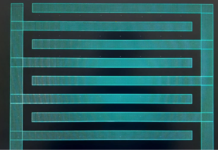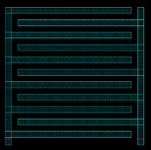KingDarius6288
Junior Member level 2
Hi,
Attached is an interdigitated electrode, implemented using metal 6 layer in 180nm tech, with a capacitance value of 6fF. It should generate a 70% change in the gain of an OTA, but when I connect it to the OTA, nothing happens. It seems that the Cadence does not recognize it as a capacitance. Am I missing some layer in the electrode layout?
In other words, for the cadence to consider the capacitance of the electrode, should I add a specific layer or sth to the layout shown in the attached photo?
Thanks and happy new year.
Attached is an interdigitated electrode, implemented using metal 6 layer in 180nm tech, with a capacitance value of 6fF. It should generate a 70% change in the gain of an OTA, but when I connect it to the OTA, nothing happens. It seems that the Cadence does not recognize it as a capacitance. Am I missing some layer in the electrode layout?
In other words, for the cadence to consider the capacitance of the electrode, should I add a specific layer or sth to the layout shown in the attached photo?
Thanks and happy new year.

